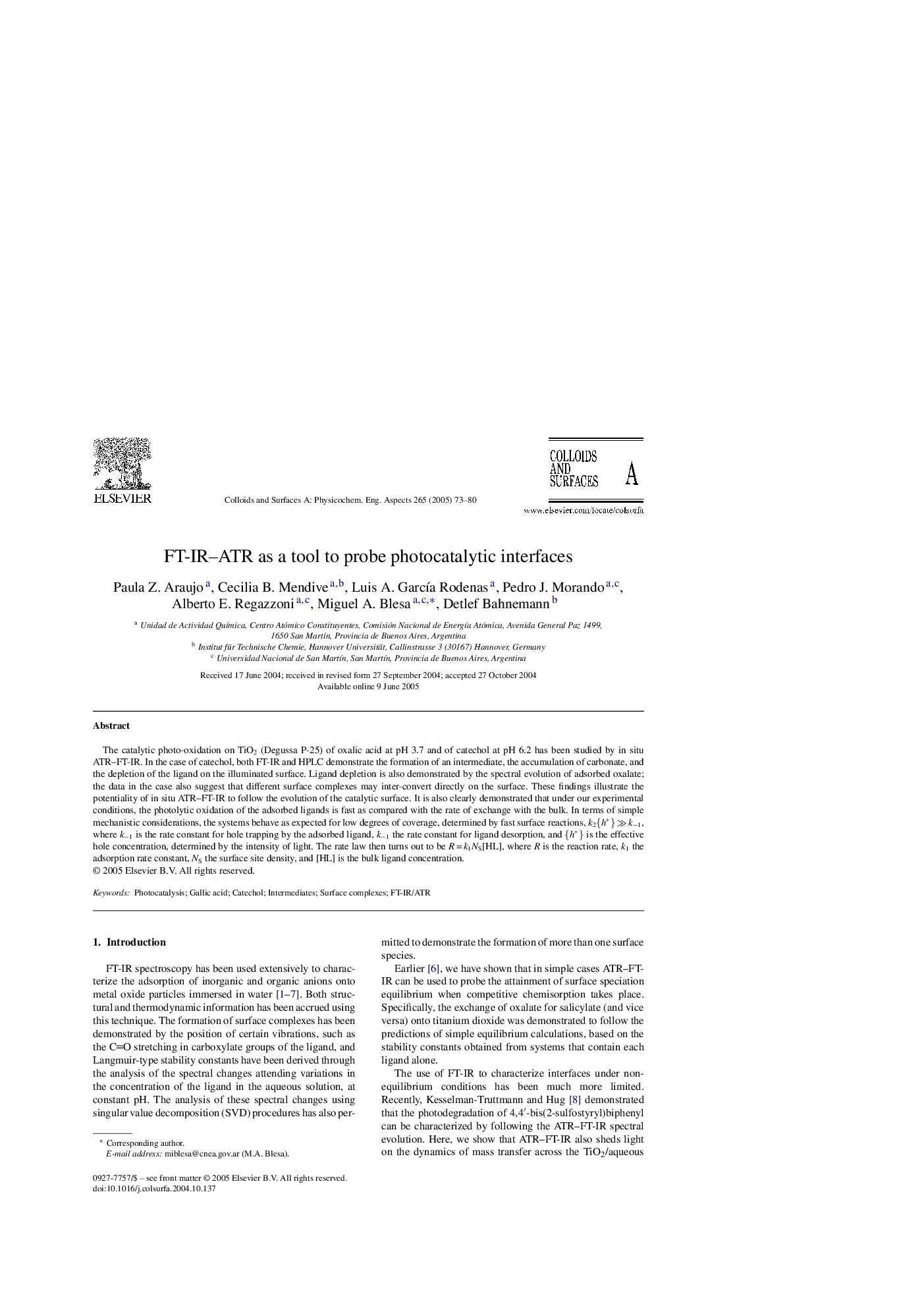| Article ID | Journal | Published Year | Pages | File Type |
|---|---|---|---|---|
| 9675684 | Colloids and Surfaces A: Physicochemical and Engineering Aspects | 2005 | 8 Pages |
Abstract
The catalytic photo-oxidation on TiO2 (Degussa P-25) of oxalic acid at pH 3.7 and of catechol at pH 6.2 has been studied by in situ ATR-FT-IR. In the case of catechol, both FT-IR and HPLC demonstrate the formation of an intermediate, the accumulation of carbonate, and the depletion of the ligand on the illuminated surface. Ligand depletion is also demonstrated by the spectral evolution of adsorbed oxalate; the data in the case also suggest that different surface complexes may inter-convert directly on the surface. These findings illustrate the potentiality of in situ ATR-FT-IR to follow the evolution of the catalytic surface. It is also clearly demonstrated that under our experimental conditions, the photolytic oxidation of the adsorbed ligands is fast as compared with the rate of exchange with the bulk. In terms of simple mechanistic considerations, the systems behave as expected for low degrees of coverage, determined by fast surface reactions, k2{h+}Â â«Â kâ1, where kâ1 is the rate constant for hole trapping by the adsorbed ligand, kâ1 the rate constant for ligand desorption, and {h+} is the effective hole concentration, determined by the intensity of light. The rate law then turns out to be RÂ =Â k1NS[HL], where R is the reaction rate, k1 the adsorption rate constant, NS the surface site density, and [HL] is the bulk ligand concentration.
Related Topics
Physical Sciences and Engineering
Chemical Engineering
Colloid and Surface Chemistry
Authors
Paula Z. Araujo, Cecilia B. Mendive, Luis A. GarcÃa Rodenas, Pedro J. Morando, Alberto E. Regazzoni, Miguel A. Blesa, Detlef Bahnemann,
